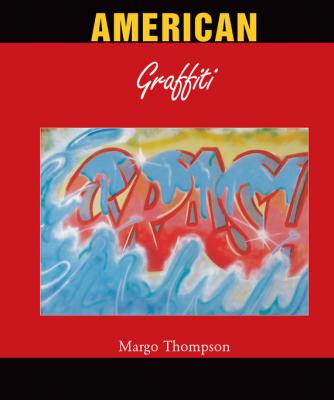American Graffiti. Margo Thompson
Читать онлайн.| Название | American Graffiti |
|---|---|
| Автор произведения | Margo Thompson |
| Жанр | Иностранные языки |
| Серия | Temporis |
| Издательство | Иностранные языки |
| Год выпуска | 0 |
| isbn | 978-1-78310-704-9 |
Примечания
1
Following the artists’ preference and for clarity’s sake, I will refer to artists who painted in the subways as writers, their practice as writing, piecing or tagging; their creations as pieces or tags. They are also graffiti artists, but not all graffiti artists were writers.
2
Nicolas A. Moufarrege, “Lightning Strikes (Not Once but Twice): An Interview with Graffiti Artists,”
3
Moufarrege, “Lightning Strikes,” 88.
4
Interview with DAZE, 26 July 2006.
5
Jack Stewart, “Subway Graffiti: An Aesthetic Study of Graffiti on the Subway System of New York City, 1970–1978” (Ph.D. diss., New York University, 1989). Tags are the names subway writers adopt, and a tag is that name written in a distinctive style on a wall. Pieces, short for masterpieces, are large, colourful compositions that may incorporate the writer’s tag, and cover a substantial portion of a subway car. They are further categorised by size: window-down, top-down, and end-to-end.
6
Quoted in Richard Goldstein, “This Thing Has Gotten Completely Out of Hand,”
7
Norman Mailer,
8
Peter Schjeldahl, “Graffiti Goes Legit – But the ‘Show-off’ Ebullience Remains,”
9
See Liza Kirwin, “It’s All True: Imagining New York’s East Village Art Scene of the 1980s” (Ph.D. dissertation, University of Maryland at College Park, 1999).
10
Kirwin, 19.
11
David Gonzalez, “Walls of Art for Everyone, But Made by Not Just Anyone,”
12
Joe Austin,
13
Museum Boijmans Van Beuningen,
14
“‘TAKI 183’ Spawns Pen Pals,”
15
Richard Goldstein, “This Thing Has Gotten Completely Out of Hand,”
16
Froukje Hoekstra, ed.,
17
Interview with BLADE, 25 July 2006; Joe Austin,
18
Interview with DAZE, 26 July 2006.
19
Hoekstra,
20
Marilyn Mizrahi, “Graffiti Treated as Art by the Art World,”
21
Martha Cooper,
22
Martha Cooper and Henry Chalfant,
23
CRASH, lecture at the Brooklyn Museum, 1 July 2006. Podcast. Accessed 15 December 2006; Austin,
24
Andrew “ZEPHYR” Witten and Michael White,
25
Interview with DAZE, 26 July 2006.
26
Cooper and Chalfant, 50.
27
Witten and White, 19.
28
Ivor L. Miller,
29
Interviews with LADY PINK, 28 July 2006 and ZEPHYR.
30
.
31
.
32
Interview with DAZE, 26 July 2006.
33
Miller, 107.
34
Miller, 13.
35
36
Miller, 87.
37
Mizrahi, 10.
38
Miller, 85.
39
.
40
Interview with DAZE by David Hirsh for American Graffiti Museum. DAZE clipping file, Museum of the City of New York. Austin, 56.
41
Austin, 56.
42
Stewart, 444, 455.
43
Peter Schjeldahl, “Graffiti Goes Legit – but the ‘Show-off’ Ebullience Remains,”
44
Cooper and Chalfant, 90–3.
45
Cooper and Chalfant, 28.
46
Austin, 47–55.
47
Austin, 183–5.
48
Miller, 189. Emphasis in original.
49
Austin, 111–13.
50
Cooper and Chalfant, 22.
51
Austin, 114.
52
Austin, 173.
53
Witten and White, 64–5.
54
Miller, 87.
55
Miller, 84.
56
Miller, 86.
57
Miller, 131.
58
Cooper and Chalfant, 32.
59
Witten and White, 111.
60
Stewart, 444, 455.
61
Stewart, 447.
62
David Villorente and Todd James,
63
Stewart, 448–50.
64
Grace Glueck, “Gallery View: On Canvas, Yes, But Still Eyesores,”
65
Richard Goldstein, “The Fire Down Below,” 55.
66
Interview with BLADE, 25 July 2006.
67
All quotations
